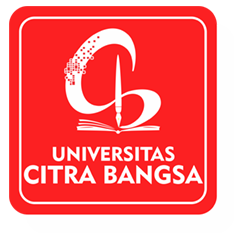The Influence of the Use of Cooperative Learning Models of Blog Assisted Share Assisted Type on Student Learning Outcomes
Keywords:
Cooperative learning model, Think Pair Share, Blog, Learning OutcomesAbstract
Learning will be more effective if the teacher uses a variety of learning models and learning media. However, learning at Citra Bangsa Christian Middle School shows learning activities carried outconventionally, so that applying cooperative learning models of Think Pair Share type assisted by blogs as a variation of learning that is more lively, active, creative, effective and fun.
This study aims to study the differences between Cooperative Learning Models Think Pair Share Assisted Blog type on learning outcomes. The research method uses nonequivalent control group design. The population in this study was the entire class of students of Citra Bangsa Kupang SMPK. Sampling was done by purposive sampling, namely in class VIII as an experimental group and VIII E. The instrument used was a multiple choice test and student questionnaire.
The data analysis technique used independent t-test. The results obtained by the average value of the pretest of the experimental group and the control group were 60.45 and 60. While the posttest for the experimental group and the control group was 86.13 and 80, the average percentage of the research questionnaire was 82.06%. The results of the t-test analysis of significance value of 0,000 <0.05 which means that H0 is rejected and Ha is accepted based on the hypothesis formulation criteria. The results of the study obtained conclusions from the Think Pair Share type of cooperative learning model aided by blogs on student learning outcomes,
Downloads
Downloads
Published
How to Cite
Issue
Section
License
Every works in JUMPIKA is licensed under a Creative Commons Attribution-ShareAlike 4.0 International License.
Authors who publish with this journal agree to the following terms:
- Authors retain copyright and grant the journal right of first publication with the work simultaneously licensed under a Creative Commons Attribution License that allows others to share the work with an acknowledgment of the work's authorship and initial publication in this journal.
- Authors are able to enter into separate, additional contractual arrangements for the non-exclusive distribution of the journal's published version of the work (e.g., post it to an institutional repository or publish it in a book), with an acknowledgment of its initial publication in this journal.
- Authors are permitted and encouraged to post their work online (e.g., in institutional repositories or on their website) prior to and during the submission process, as it can lead to productive exchanges, as well as earlier and greater citation of published work (See The Effect of Open Access).




